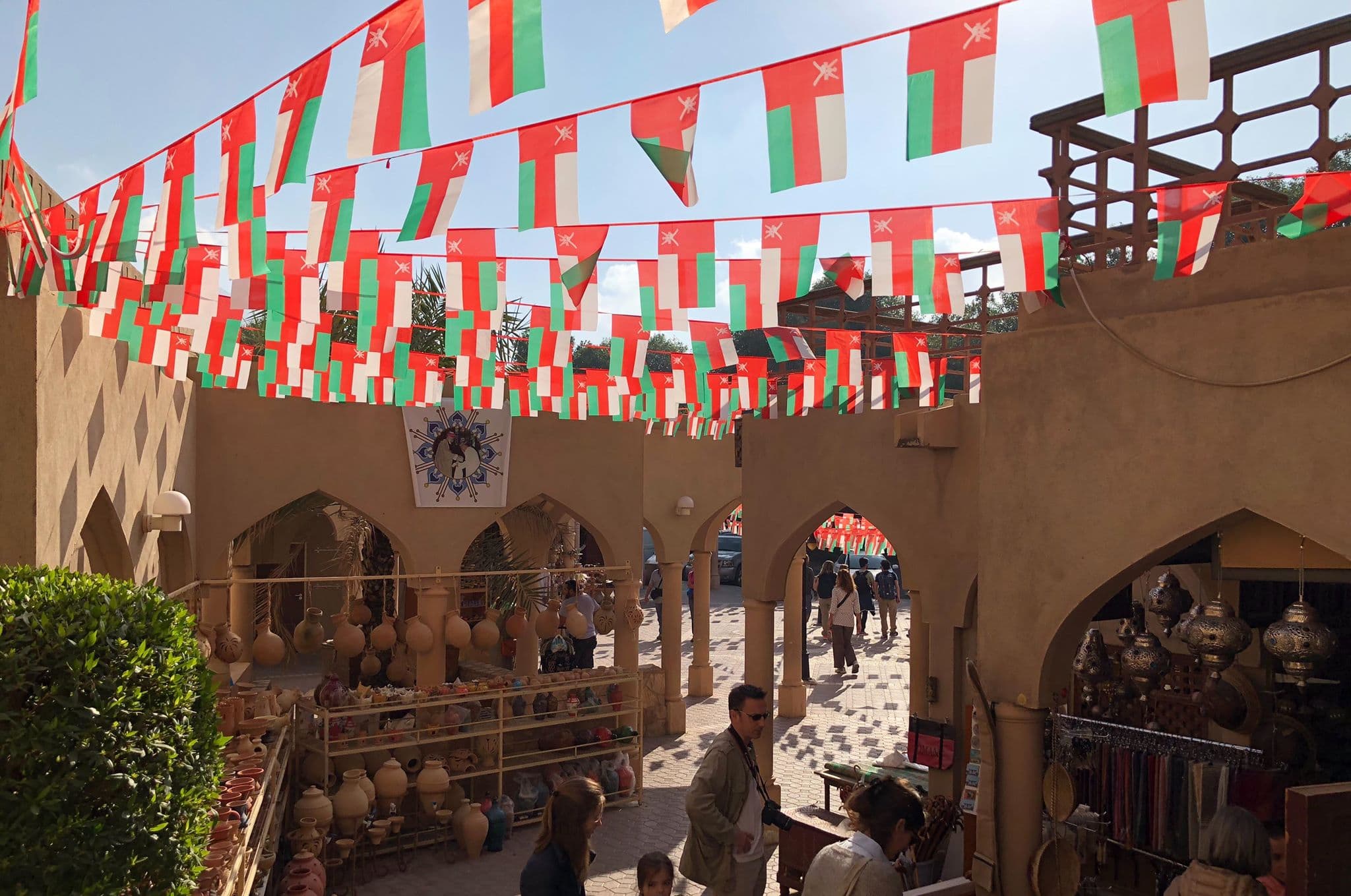By Alice Bello
During our month-long winter break, I traveled to Oman, a sultanate at the eastern corner of the Arabian Peninsula. Incredibly influential during the 19th century, it fell into the hands of Sultan Said bin Taimur, whose outdated techniques led to his deposition in 1970 by his own son, Sultan Qaboos. The country’s evolution since has been astounding. Whereas in 1970 only three schools existed, the literacy rate is of 86.9% today, and all homes now have running water. Maybe I’ve bored you with all of this history, but it’s one of the first hints as to how differently this country has developed compared to my Western home.
It was my first time in a Muslim country. Granted, Oman is one of the most religiously lenient countries of the region, especially compared to neighboring Saudi Arabia, where Sharia law is practiced: some crimes are punished by public beheading and stoning, women obtained the right to vote since 2015, and many women wear full-face veils. Although we women didn’t wear abayas (long black cloaks) or hijabs (headscarf) during our stay, we wore modest clothing and respected the norms of the country.
I arrived in Oman with an open mind, careful to place all of my observations in the perspective of the religious and cultural practices of the country. As human beings, we are geared towards using our personal feelings and emotions to perceive our surroundings. I was wary of falling into the Eurocentric trap, of looking at Oman through my own limited prism and as a consequence viewing my own culture as superior. I saw this trip as an opportunity to have a firsthand look at Islam, even if my vision would in no way be representative of the entire country, nor of the entire religion.
I quickly realized objectivity is nearly impossible. My objectivity was riled because it didn’t align with the expectations I had arrived with: I thought that Islam was a promoter of the sanctity of womanhood and would thus commandeer a greater respect of women. I would argue that it’s possible to be objective in observation when you aren’t affected directly by your surroundings, but the second that you are personally impacted, all objectivity dissolves.
Although I tried to remind myself that my understanding of the religion is extremely limited and that my experience of it was deformed by the fact that I’m not an Omani woman that has been raised this way, it rapidly became impossible for me to ignore how heavily womanhood is draped in shame. In a market, as I walked around in pants and long sleeves, an elderly woman looked me up and down and proceeded to tsk at me. Several times, men would gawk unabashedly, even going so far as to blow kisses and take pictures of us. Two men filmed my sisters and me as we bathed in a highly touristic spot.
Perhaps I can look past how I was treated because foreign travelers are often treated with apprehension. However, the main obstacle to my objectivity wasn’t the lack of respect I experienced, but rather the flaws of the system in place. When I say ‘flaws’, I don’t mean that in terms of my European ways, like the treatment of women, but more precisely flaws in the Sultan’s desire to make his country advance. Sultan Qaboos promotes equality and progress, but there seems to be a profound irreconcilability between the parity sought and Omani culture.
Upon visiting the Grand Mosque in Muscat, the capital, I was stunned at how lavish the areas dedicated to men were, and how those provided for women paled in comparison. The prayer room for men had a capacity of 6,500, whereas that of women was only equipped to accommodate 750. Some may argue that this is because men have a duty to be more involved in the religion, but then what is the place of women in Omani society?
How can a country be considered egalitarian and open-minded when polygamy is legal? Rest assured, the number of wives is often limited to two seeing as the husband must give the same amount of attention and resources to each of his wives, and in the words of our guide, it isn’t ‘physically feasible for a man to give the same physical attention to more than two women’, if you know what I mean. How can Oman claim to give equal opportunities to men and women when its 45 °C summers force black abaya-wearing women to stay inside, while men clothed in all-white attires can roam freely? How can Oman aspire to gender parity when the female body is sexually objectified on a regular basis?
Maybe I’m being too harsh. Just 50 years ago, the country nearly resembled one of the Middle Ages. Today, Oman has some of the best health services in the world, its provision of education has skyrocketed, and paved roads are now commonplace. At this rate, it may just be a question of time before cultural practices and religion evolve with the needs of the country. Perhaps I’ve fallen into the eurocentrist trap by claiming the society needs to evolve: who says they aren’t just as happy as we are?
That being said, there is some progress to be made in terms of women’s rights. Out of 84 seats in the Council of Oman (its equivalent to the lower chamber of Parliament), only one woman was elected in 2015. The only female ministers in Sultan Qaboos’ government are in charge of Education and Secondary Education. This proportion may seem minuscule, but it also means that women are in charge of the education of future generations. Who knows, maybe they’ll be the ones to make the Omani perception of culture and women veer in a new direction.
Alice is a Parisian New Yorker or a New Yorkan (is that a word?) Parisianer (that’s probably not a word either) hoping to conquer the world of journalism one day. Interests include drinking coffee, reading the New York Times, and reading the New York Times while drinking coffee. The Parisian New Yorker runs once every month.
Picture: Alice Bello//The Sundial Press
Other posts that may interest you:
- The Trouble with ‘Ecocide’
- Carbon dioxide removal – hit or miss?
- Local Victories for Turkish Opposition — A Sign of Hope?
- Are France and Japan a Mismatch Made in Heaven?
- A Reflection on Dark Tourism
Discover more from The Sundial Press
Subscribe to get the latest posts sent to your email.





